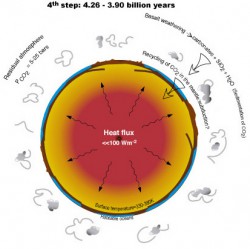AMGC Seminar

Anthropogenic and crustal fluxes of methane constrained from groundwater data in shale gas exploration areas of Quebec, Canada
Daniele L. Pinti
GEOTOP research center for geochemistry and geodynamics Département des Sciences de la Terre et de l’Atmosphère, Université du Québec à Montréal, Canada

Abstract
The increasing number of studies on the determination of natural methane in groundwater in shale gas areas offers a unique opportunity for refining the quantification of geological methane emissions. Here methane fluxes computed from four potential sources in the St. Lawrence Lowlands, Quebec (Canada) are reported. Methane emissions can be caused by
- Groundwater degassing by human abstraction;
- Groundwater discharge along springs or rivers;
- Migration to the surface by microseepage. In areas where shale gas is extracted by hydraulic fracturing methane emissions can be related also to
- The degassing of the flowback waters during recovery.
Methane fluxes related to groundwater discharge surpass those of microseepage and human abstraction . Exploitation of the Utica shale over a 10- to 20-year horizon would emit from one third to 45 times the methane flux from groundwater discharge. Finally, using calibration against crustal helium fluxes, it is estimated that a maximum global microseepage methane flux of 2 Tg yr-1 seeps from all exploited or prospective shale gas areas around the world. This flux is one tenth of that previously estimated in literature (10-25 Tg yr-1) based on field methane flux measurements over oil and gas provinces.